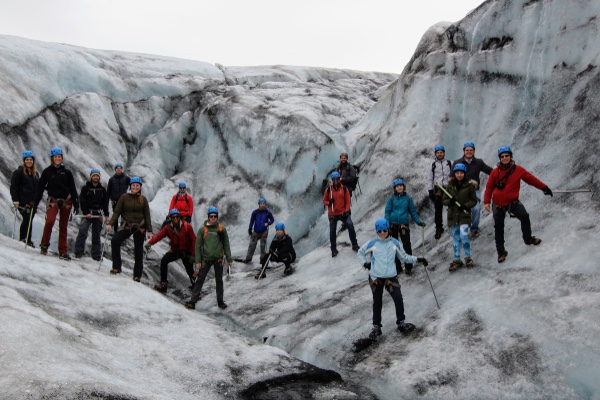Scaling a Company… Retreat

Trying to scale a company is like trying to perform open heart surgery on an awake patient: your company. The day-to-day operations of a company in growth mode can be complicated enough. What happens when you are a company in growth mode that has a distributed team, and you host bi-annual offsite retreats?
We brought over 50 employees from three continents to Iceland on our most recent retreat. We hiked on glaciers, swam in the Blue Lagoon, and experienced a never-setting sun.

But retreats haven’t always been as glamorous. Here are three things I’ve learned from hosting eleven company retreats at Parse.ly over six years.
Be flexible: Let the goal of the retreat change over time
Retreats used to be focused time for us to get together and work. When we had five, 10 or even 25 employees, we would have team-members submit sessions they wanted to host or hear. People prepared presentations on their work or discussed future plans. We wanted people to come back ready to tackle new challenges.
And people did get to work, perhaps too much. At the end of some early retreats, people felt burnt out. We were trying to cram too much into the short time that we had together: work, social activities, team building, and free time.
So instead, we’ve chosen to have the goal of the retreat be focused on having people learn about each other, building empathy, and cultivating friendships.

Avoid hangry employees: The importance of logistics
During our early retreats, we would have each person sign up to cook a meal. It was a lot of fun and we ate great food, until we had a little over 10 employees. Anyone who has hosted a dinner party knows serving 12 or more people is a lot of work. Dinners got served late, and we ended up with hangry employees.
Group travel, lodging, and reservations are not for the faint of heart. Making things go smoothly is not only a lot of work, it’s work that’s very noticeable if not done well. And the stakes are high: if you don’t get it right, you’ve missed a huge opportunity.
Given the amount of time our company is investing in these retreats (8 hours of working hours/day x 50 people x 4 days = 1600 hours of company time!), getting the logistics right isn’t just convenient, it’s essential. This year, we worked with Sean Hoff at Moniker Partners on our trip to Iceland. Having someone that has extensive experience in travel logistics with big groups was invaluable. Further, if the goal is for you to create amazingly memorable experiences (and it should be), then having someone who knows how to do that at your destination makes this a guarantee. The money is worth it, and our whole trip went off without a hitch to create one of our best retreats ever.

Don’t leave it to chance: Force cross-team interaction
Sometimes I find myself waxing nostalgic about the earlier retreats. Everything was just easier. But perhaps the most important force function that happened as a result of having a small team was how natural it was to have deep conversations with everyone. As a company of over 50 people it’s easy for individuals to lean towards interacting with those that they’re most familiar with.
However, this goes against the grain of what we try to accomplish at our retreats. In other words, you need to explicitly and implicitly create opportunities for cross team interaction. Explicitly, I told the company that this was one of main goals of the retreat. Implicitly, we created activities that would naturally cut across teams and allow people to chat with those they’re less familiar with.
For all the benefits a small team affords, I actually consider the growth of the team as one of the things I’m proudest of at Parse.ly, and retreats are a very physical reminder of that growth. I couldn’t be happier to have these incredible people at my company, and retreats is when I celebrate that.
So, as they say in Iceland,
Skál!
